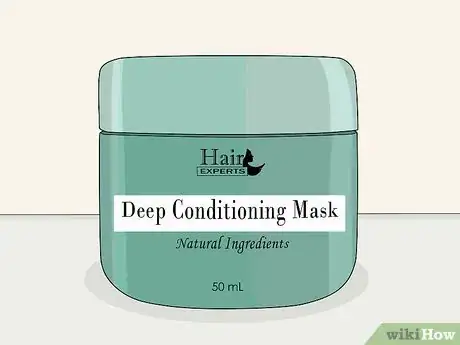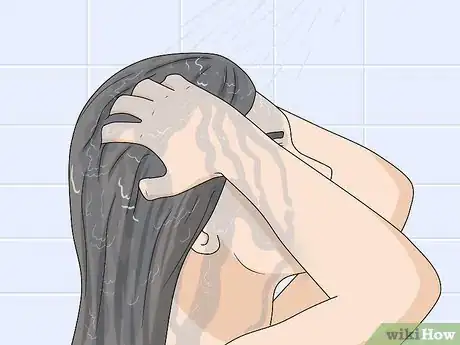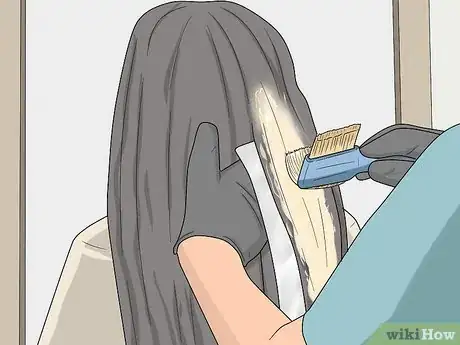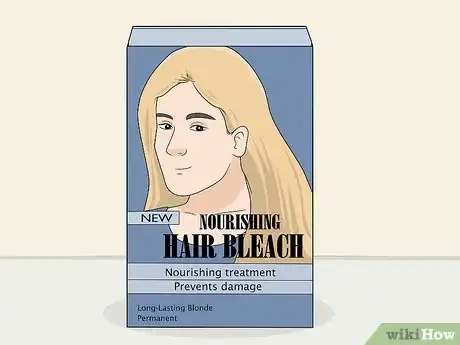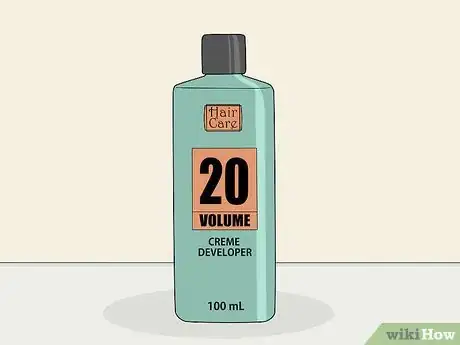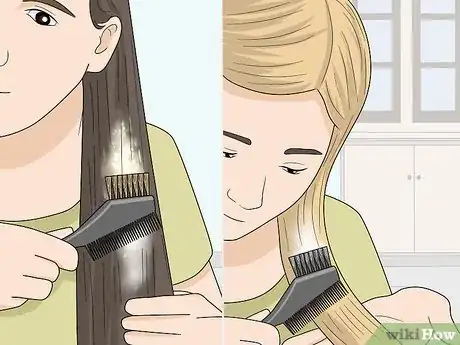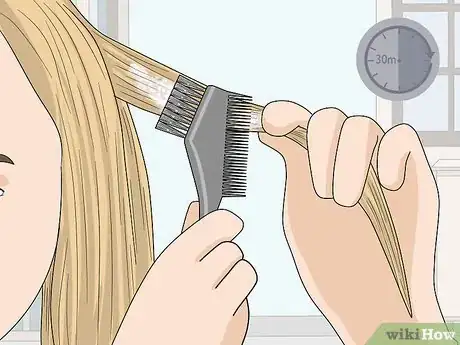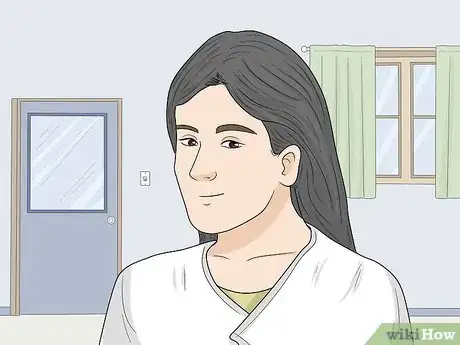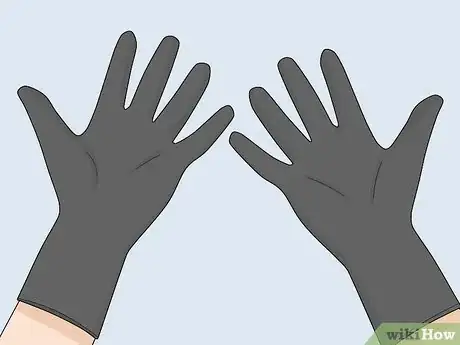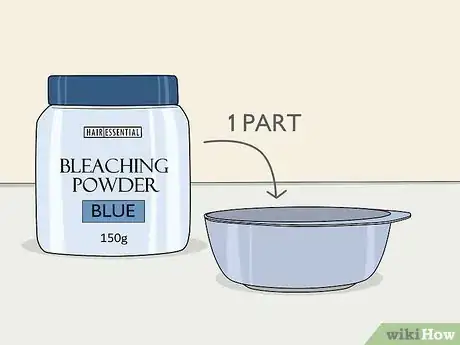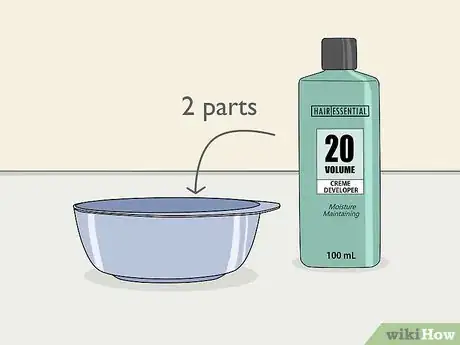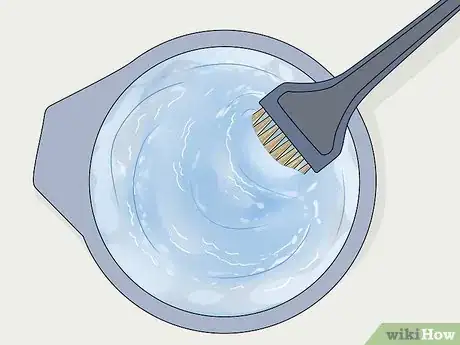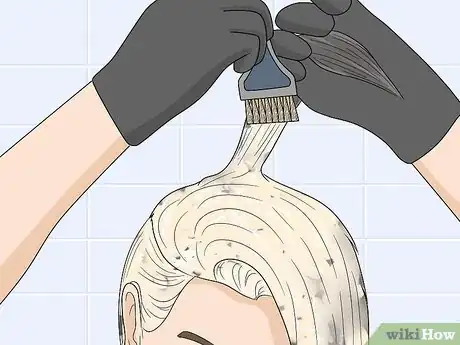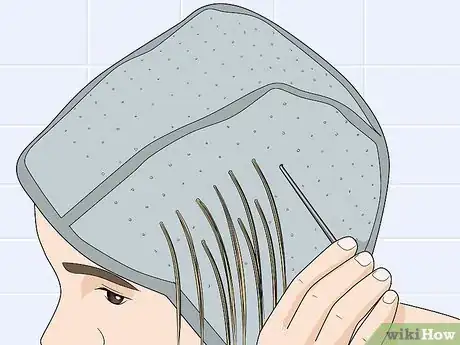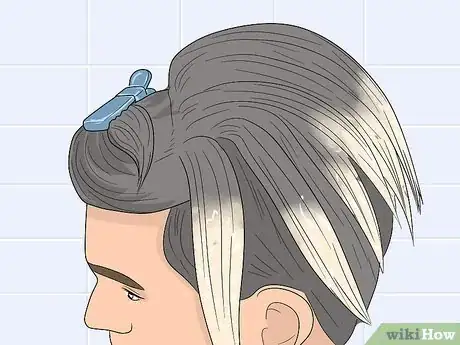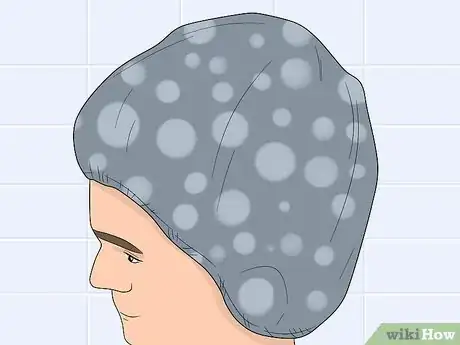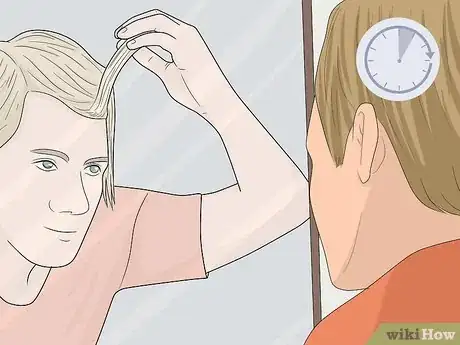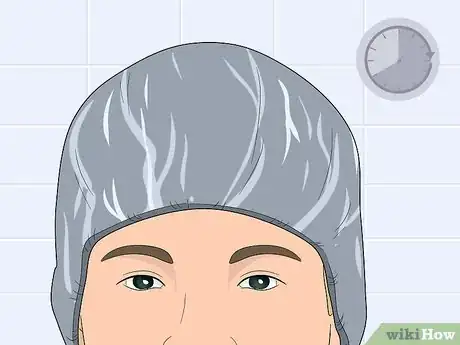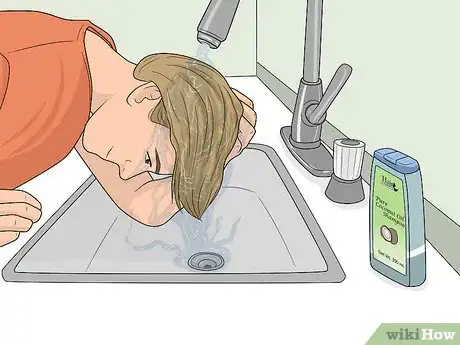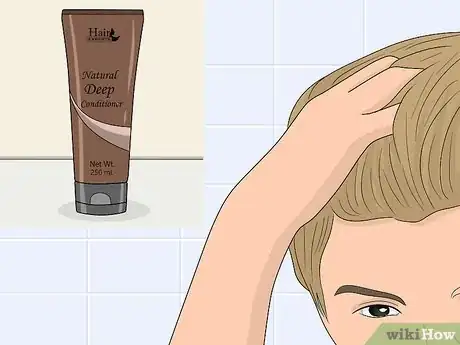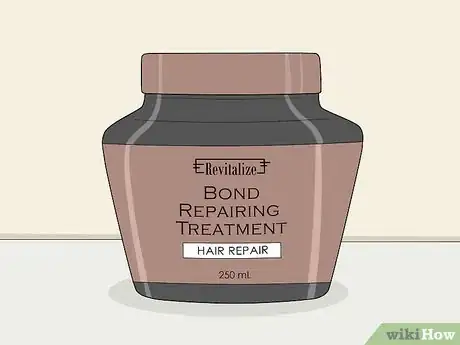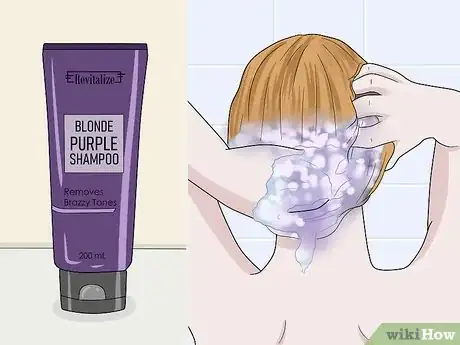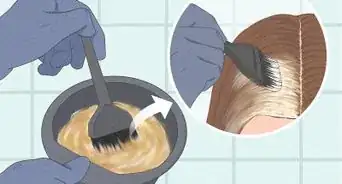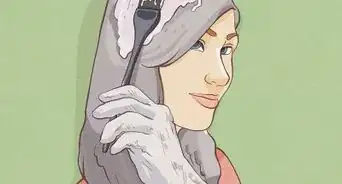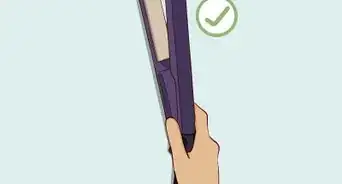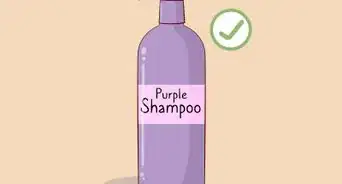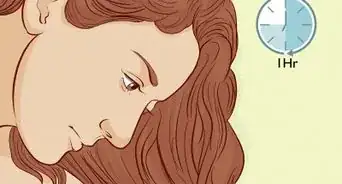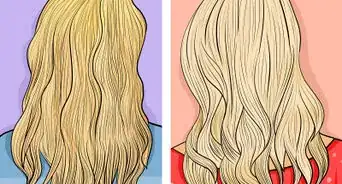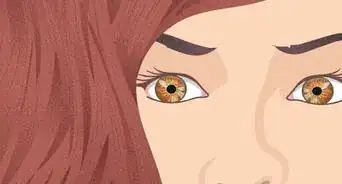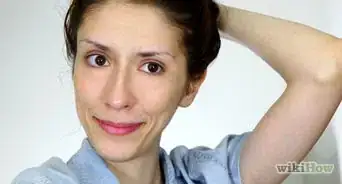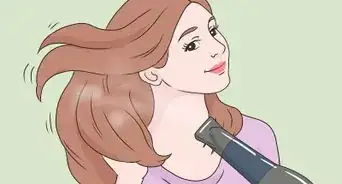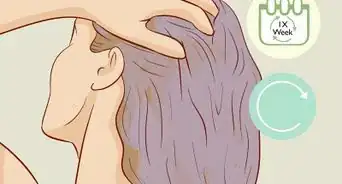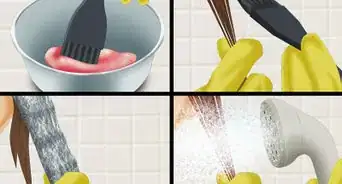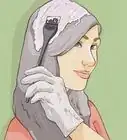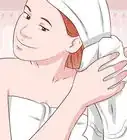This article was co-authored by Arthur Sebastian and by wikiHow staff writer, Danielle Blinka, MA, MPA. Arthur Sebastian is the Owner of Arthur Sebastian Hair Salon in San Francisco, California. Arthur has worked as a hair stylist for over 20 years and received his Cosmetology License in 1998. He believes that the true work of a successful hair stylist comes from passion and a love for hairdressing.
There are 9 references cited in this article, which can be found at the bottom of the page.
This article has been viewed 161,974 times.
Bleaching your hair creates a bold look, but it also causes damage. Fortunately, you might be able to protect and restore your strands to minimize damage, whether you’re bleaching blonde hair or darker hair. The bleaching process isn’t too difficult, but go slowly to minimize the chances of making a mistake. The best way to bleach your hair is to prep it with a conditioning treatment before applying the bleach. Additionally, care for your hair after you bleach it to help restore the moisture.
Steps
Prepping Your Hair
-
1Use a deep conditioning mask daily in the week before bleaching. Since bleaching your hair depletes it of moisture, add extra moisture to your hair in the days prior to bleaching it. Purchase a deep conditioning mask and follow the directions to apply it to your hair. Coat your entire head of hair with the treatment, then let it sit for the recommended period of time. Rinse the treatment out with cool water.[1]
- Repeat the treatment every day for a full week before you bleach your hair.
- The cool water will close your hair shaft and make your hair look shiny.
- As an example, you might leave the treatment on for 30 minutes.
-
2Test the bleach 48 hours in advance to check for a reaction. Mix up a small amount of bleach about 48 hours before you plan to bleach your hair. Mix 1 part bleach powder and 2 parts developer/peroxide. Apply a dab of the bleach on your skin and coat a strand of your hair. Let the bleach sit for 30 minutes, then rinse it off and check your results.[2]
- See if the shade of your strand is your desired shade. This will give you an idea of what your hair will look like after you bleach it. If necessary, you can adjust the processing time to get a lighter or darker shade.
- Make sure that your skin isn’t irritated from the bleach. If it is, you might decide that bleaching isn't right for you or you may shorten your processing time.
Warning: If your skin starts itching or burning, wash the bleach off immediately. If the itching and burning continues, see your doctor to get your skin examined.
Advertisement -
3Wash your hair 24 hours before bleaching it so natural oils build up. Your natural oils will protect your scalp from bleach damage. To allow your skin time for your natural oils to develop, shampoo your hair 24 hours before you plan to bleach it. After you shampoo, use a conditioner to moisturize your hair.[3]
- It’s okay to wash your hair 48 hours before you bleach it if you prefer.
Minimizing Bleach Damage
-
1Get your hair professionally bleached for best results. Professional salons have better bleaching formulas than the ones you find over-the-counter, so a professional bleaching typically causes less damage. Additionally, trained hair stylists know the best way to apply the bleach to minimize damage. Make an appointment with a hair stylist to have your hair professionally bleached to help prevent damage.[4]
- Ask you stylist how light they think you can go in 1 appointment. They can advise you on the best way to get the results you want.
-
2Look for bleach with nourishing ingredients if you're doing it yourself. Use bleach that's formulated for use on your hair. Additionally, choose a higher-quality bleach that includes additives that can improve your hair quality and preserve the health of your hair. Read the label on your hair bleach to find 1 that says it helps prevent damage.[5]
- For instance, Brazilian Bond Builder and Olaplex can both be mixed into bleach to help minimize damage to your hair.
-
3Use a 10- or 20-volume developer to minimize damage. Low volume developers produce weaker bleach, so they cause less damage to your hair. It will likely take you longer to achieve your desired results with a 10- or 20-volume developer, but it'll help you minimize the damage. Choose a bleaching kit that has a low volume developer or purchase your bleach powder and volume developer separately so you can choose a low volume developer.
- You can find a 10- or 20-volume developer at a beauty supply store or online.
-
4Lighten your hair slowly if you have dark hair. Removing the pigment from dark hair requires a longer process, which causes more damage. You might be able to minimize the damage by bleaching your hair multiple times over a period of time until you reach your desired shade. Give your hair at least 10 days to recover in between bleaching sessions. During this time, use your deep conditioner every day to help repair your hair.
- For instance, you might bleach your hair 3 times over a 6-week period, giving your hair 2 weeks to recover in between bleachings.
-
5Shorten your processing time to 30 minutes or less if your hair is dyed. You can bleach dyed hair, but it will likely cause more damage to your hair. Additionally, your hair likely won't lighten as much as natural hair would. Leave the bleach on your hair for no more than 30 minutes at a time if you've previously dyed your hair.[6]
- It's best to see a professional stylist if you have dyed hair.
- Your hair may look patchy after you bleach it if your hair was previously dyed. If this happens, see your stylist for advice on how to cover it without further damaging your hair.
Warning: If you've dyed your hair very dark, it's essential that you go to a professional stylist. Otherwise, you may damage your hair beyond repair.[7]
Mixing Your Bleach at Home
-
1Cover your shoulders with an old towel to protect from the bleach. You might drip bleach while you’re applying it to your hair. To protect your skin and clothing, drape an old towel over your shoulders before you bleach your hair.[8]
- Choose a towel that you don’t mind damaging. If bleach gets on the towel, it will cause discoloration.
- If you have a hairdresser’s cape, use it to protect your skin and clothing. You can find an inexpensive hairdresser’s cape at a beauty supply store or online.
-
2Put on gloves to protect your hands. Bleach can irritate your skin and may cause chemical burns, so protect your hands using gloves. Use plastic gloves that you can throw away once you’re done.
- Put on your gloves before you handle the bleach ingredients.
-
3Add 1 part blue or purple bleach powder to a plastic mixing bowl. Follow the directions on your bleach powder or bleaching kit to measure out the powder. Then, put the powder into a plastic mixing bowl.[9]
- Blue or purple powder reduces the risk of brassiness after you bleach your hair.
- You can find bleaching powder and a plastic mixing bowl at your local beauty supply store or online.
- Always use a plastic bowl when handling bleach because bleach can react with metal.
Tip: For an easy option, purchase a bleaching kit that contains both a bleaching powder and a developer/peroxide. These are sold at most beauty supply stores and online.
-
4Add 2 parts liquid developer/peroxide to the bowl. Follow the directions on the packaging to measure out your developer/peroxide. Then, pour the developer/peroxide into the mixing bowl with the bleach powder. You may notice some bubbling as the ingredients combine.
- If you’re bleaching blond hair, use a 10-volume developer.
- Use a 20-volume developer for light brown hair.
- If you have dark brown hair or black hair, you may need a 30- or 40-volume developer. However, it's best to stick to a 20-volume developer if you want to minimize damage.
-
5Stir the ingredients using a plastic brush applicator. Dip the bristled end of a plastic brush applicator into the bleach ingredients. Use the brush to stir the developer/peroxide into the bleach powder. Continue stirring until the bleach is consistent and free of lumps.[10]
- You can find a plastic brush applicator at a local beauty supply store or online. Don't use a metal utensil, as it may react with the bleach.
Applying Bleach to Your Own Hair
-
1Bleach your entire head of hair if you want a consistent color. Divide your hair in half vertically, then in half horizontally to create 4 sections. Secure the top sections with plastic clips. Start applying bleach to one of the bottom sections, working from the ends up to the roots. Repeat the process on the other bottom section, then do the same for the top sections. Make sure all of your hair is evenly coated with bleach from root to tip.[11]
- If you have very thick hair, you might create 6 sections to make it easier to apply the bleach evenly.
- If you feel like a section is too big, it’s okay to divide it into smaller sections so that it’s easier to apply the bleach evenly. You don’t want to miss a spot.
- Do your best not to get the bleach on your scalp. The bleach may burn or irritate your scalp if it gets on your skin.
Warning: Always use plastic clips when bleaching your hair. Metal clips can react with the bleach and may damage your hair.
-
2Use a highlighting cap to do highlights. Place a highlighting cap over your hair, then pull your hair through the holes in it. Pull the hair through all of the holes or just some of them, depending on how many highlights you want. Use your applicator brush to cover all of the exposed hair with bleach. Make sure you coat just the strands, not the cap itself.[12]
- If you apply bleach onto the cap, it may seep through the holes and onto the rest of your hair. This might create splotches on your hair.
Variation: Clip your hair into 4 sections for all-over highlights or 2 sections for highlights only on the top of your hair. Let down the first section of hair, then use the end of a comb to separate a small piece to highlight. Place a piece of foil under the hair you want to bleach. Apply the bleach to the hair, then fold the foil up over it to protect the rest of your hair from the bleach. Work your way around your head until you have your desired amount of highlights.
-
3Bleach different sized pieces of hair for a balayage effect. Clip up the top part of your hair and start with the bottom section. Pick up a thin piece of hair from the bottom section. Bring it over your shoulder and use your fingers or an applicator brush to paint bleach on the section. Move to the other side of your head, pick up another wispy piece, and paint the piece with bleach. Alternate back and forth highlighting pieces of hair.[13]
- Cover the bleached hair with foil to keep them separate, then let down the top part of your hair. Apply the bleach to wispy sections of the top portion to complete your highlights, then cover the bleached hair with foil.
- Balayage creates more natural-looking highlights than a highlighting cap or the foil method. It's okay for your bleached pieces to be different sizes.
-
4Cover your hair in plastic wrap or a shower cap. Covering your head will keep in the heat, which helps the bleach process. Use plastic wrap from your kitchen or a regular shower cap. Put it over your head to seal in the natural heat from your head.[14]
- It’s okay to bleach your hair without covering it in plastic. However, your hair will process better if you cover your hair.
-
5Check your hair color every 5-10 minutes to see if you like it. After the bleach has been on your hair for 5-10 minutes, wipe off a small amount of bleach to check the color. If it’s not your desired shade, allow the bleach to sit for another 5-10 minutes. Continue to check your hair until you’re happy with the shade or it’s been 40 minutes.
- Keep in mind that the bleach will cause less damage if it’s on your hair for a shorter amount of time.
-
6Let the bleach set for up to 40 minutes. Bleach starts working immediately, but it may take time to reach your desired shade. Allow the bleach to process for up to 40 minutes, then rinse it off.
- Don’t allow the bleach to sit on your hair for longer than 40 minutes, even if your hair isn’t as light as you’d like. Doing so will cause damage and breakage to your hair.
- If you’re unhappy with the color of your hair, you can bleach it again in about 10 days. Alternatively, talk to your stylist about getting your hair professionally bleached.
-
7Wash your hair with shampoo to remove the bleach. Rinse out the bleach using cool water. Then, use your fingers to apply a quarter-size amount of your regular shampoo to your hair. Massage the shampoo into your hair and scalp to help remove the bleach. Then, rinse your hair clean under a stream of warm water.[15]
- Make sure you remove all of the bleach from your hair. If necessary, shampoo your hair again to get out all of the bleach.
-
8Use a deep conditioner to help restore lost moisture. After you shampoo your hair, coat your strands with a deep conditioner. Let the conditioner sit on your hair for at least 3 minutes to give it time to work. Then, rinse out the conditioner with cool water.[16]
- The cool water will close your hair shaft so your hair looks shiny.
-
9Let your hair air dry to avoid additional damage. Since bleach is a chemical, it can damage your hair. After you bleach it, it’s best to avoid heat styling to prevent further damage. This may help you minimize the damage to your hair. Allow your hair to air dry after you wash out the bleach.[17]
- If you like, apply smoothing cream to your hair to help minimize frizz.
Variation: If you must heat-style your hair, apply a heat protectant before you style it to minimize the damage to your hair. Then, blow dry it on low to medium heat.
Caring for Bleached Hair
-
1Use a deep conditioning mask daily for the week after bleaching. Bleaching your hair removes the moisture, so it’s important to use a deep conditioner to repair it. For best results, use a deep conditioning mask every day during the week after you bleach your hair. Coat your entire head of hair with a deep conditioning mask, then let it sit for the amount of time recommended on your product. Rinse the mask out with cool water.[18]
- Always rinse out conditioner with cool water because it closes your hair shaft, which gives you shinier hair.
- For instance, you might leave the mask on for 30 minutes.
Tip: You don’t need to shampoo your hair every day. It’s okay to just use your conditioning mask.
-
2Do a weekly bond-repairing treatment to help restore your hair. Bond-repairing treatments are designed to repair your hair and leave it shiny. Look for a product that's labeled for bond-repairing. Apply a large dollop of the product to your hair, then comb the formula through your strands. Let the treatment set on your hair for at least 30 minutes. Then, shampoo your hair to remove the treatment and hopefully reveal softer, shinier hair.[19]
- It’s best to leave the treatment on for several hours so it has more time to work. For instance, you might leave it on overnight. Just cover your hair with a sleeping cap.
- Bond-repairing treatments are available over-the-counter and through a salon. While you'll get better results at a salon, home treatments may help you achieve healthier hair.
-
3Wash your hair with purple shampoo once a week to remove brassiness. It’s normal for blonde hair to get brassy or orange, but purple shampoo can neutralize the discoloration. Pick a purple shampoo that’s formulated for your shade of blonde. Use your purple shampoo once a week in place of your regular shampoo.[20]
- Ask your stylist for a recommendation.
- You can purchase purple shampoo at a salon or online.
-
4Bleach your roots every 4-6 weeks to keep your color consistent. It’s best to bleach your roots before they get too long so that you don’t get a noticeable shade difference. If you wait too long, you might need to bleach your entire head of hair to get a consistent blonde. Touch up your hair every 4 weeks if it grows quickly or every 6 weeks if your hair grows slowly.[21]
- Try not to let your roots get more than about .75 in (1.9 cm) long.
Expert Q&A
Did you know you can get expert answers for this article?
Unlock expert answers by supporting wikiHow
-
QuestionHow do you hide orange roots if you're bleaching blonde hair?
 Arthur SebastianArthur Sebastian is the Owner of Arthur Sebastian Hair Salon in San Francisco, California. Arthur has worked as a hair stylist for over 20 years and received his Cosmetology License in 1998. He believes that the true work of a successful hair stylist comes from passion and a love for hairdressing.
Arthur SebastianArthur Sebastian is the Owner of Arthur Sebastian Hair Salon in San Francisco, California. Arthur has worked as a hair stylist for over 20 years and received his Cosmetology License in 1998. He believes that the true work of a successful hair stylist comes from passion and a love for hairdressing.
Professional Hair Stylist So what you want to do is lift the orange roots and combine the bleach there, preferably in foils so you have an adequate separation in each section. Then, you lift the root from orange to blonde. I would suggest doing a shadow root just a half shade darker than the rest of your hair to create a color meld, which is a smooth separation between the roots and the rest of your hair.
So what you want to do is lift the orange roots and combine the bleach there, preferably in foils so you have an adequate separation in each section. Then, you lift the root from orange to blonde. I would suggest doing a shadow root just a half shade darker than the rest of your hair to create a color meld, which is a smooth separation between the roots and the rest of your hair.
Warnings
- Bleach can irritate your skin. If your scalp it itching or burning, wash out the bleach immediately to minimize the damage.[23]⧼thumbs_response⧽
References
- ↑ https://www.marieclaire.com/beauty/hair/a28599/how-to-go-platinum-blonde/
- ↑ https://www.nhs.uk/conditions/hair-dye-reactions/
- ↑ https://www.fashionbeans.com/article/how-to-bleach-your-hair-men/
- ↑ https://www.marieclaire.com/beauty/hair/a28599/how-to-go-platinum-blonde/
- ↑ https://www.marieclaire.com/beauty/hair/a28599/how-to-go-platinum-blonde/
- ↑ https://www.cosmopolitan.com/uk/beauty-hair/hair/a19596609/how-to-lighten-black-hair/
- ↑ https://www.cosmopolitan.com/uk/beauty-hair/hair/a19596609/how-to-lighten-black-hair/
- ↑ https://www.fashionbeans.com/article/how-to-bleach-your-hair-men/
- ↑ https://www.beautycrew.com.au/how-to-bleach-hair-at-home
- ↑ https://www.beautycrew.com.au/how-to-bleach-hair-at-home
- ↑ Arthur Sebastian. Professional Hair Stylist. Expert Interview. 29 April 2019.
- ↑ https://behindthechair.com/articles/balayage-the-15-commandments/
- ↑ https://behindthechair.com/articles/balayage-the-15-commandments/
- ↑ https://www.beautycrew.com.au/how-to-bleach-hair-at-home
- ↑ https://www.beautycrew.com.au/how-to-bleach-hair-at-home
- ↑ https://www.beautycrew.com.au/how-to-bleach-hair-at-home
- ↑ https://www.beautycrew.com.au/how-to-bleach-hair-at-home
- ↑ https://www.marieclaire.com/beauty/hair/a28599/how-to-go-platinum-blonde/
- ↑ https://www.marieclaire.com/beauty/hair/a28599/how-to-go-platinum-blonde/
- ↑ https://www.instyle.com/news/calling-all-bottle-blondes-one-product-you-need-keep-your-hue-vibrant
- ↑ https://www.marieclaire.com/beauty/hair/a28599/how-to-go-platinum-blonde/
- ↑ https://www.marieclaire.com/beauty/hair/a28599/how-to-go-platinum-blonde/
- ↑ https://www.ncbi.nlm.nih.gov/pmc/articles/PMC3664529/
